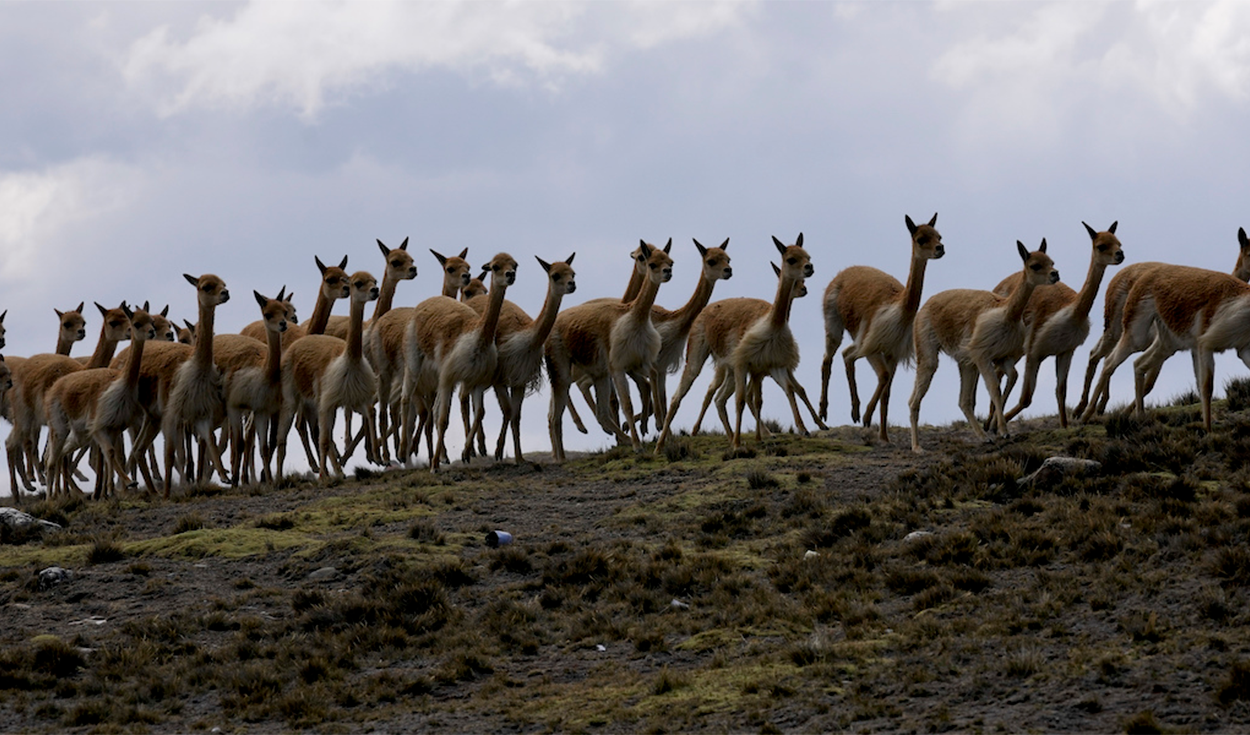
Loro Piana, a brand that sells clothing made from vicuña wool, would not be paying a fair price to the community of Lucunas for carrying out the work of extracting the material. According to a report by Boomblerglocal people receive 280 dollars for an equivalent amount of vicuña fiber, while the company sells its clothes in New York, Milan or London at prices up to US$ 30,000 for a jacket and 9 thousand for a sweater.
The money given to the community must be distributed among the locals, so it is usually not enough and some get to work for free, at least once a year. This is because there are strict hierarchies, with an elected president who can decide how to use and redistribute communal resources. In Lucanas, the rule is that community members work for free, while outsiders can receive a payment, usually around US$20 per day.
According to an INEI study in 2018, it was found that 80% of the population of Lucanas said that they had not benefited economically from the community’s participation in the vicuña trade. Likewise, the same research found that 41% of the Lucanas district was poor, which means that an individual lives on less than US$91 a month.
How did Loro Piana take over the wool production of vicuñas?
Loro Piana is owned by luxury brand conglomerate LVMH Moët Hennessy Louis Vuitton SE. It is controlled by Bernard Arnault, whose fortune is $202 billion, according to the Bloomberg Billionaires Index. The company became owner of some 2,000 hectares of Andean land near Lucanas for US$160,000 in the late 1990s.
In the 20th century, this species was hunted to near extinction by hunters who shot them for their fur instead of shearing them alive. For this reason, hunting was prohibited in 1969. But, an international treaty of 1979 helped establish a legal market for the vicuña, which consisted of the production of wool going to benefit the Andean settler. This is how the community of Lucanas was the first indigenous community to shear vicuñas under this new regime in 1994 and Loro Piana has been its buyer since then.
The following year, during the government of Alberto Fujimori, a law was approved that granted indigenous communities the exclusive right to shear and market vicuña fiber, as long as the animals were found within their territories. However, in 2000, when accusations of corruption arose against his administration, the former president issued a decree granting companies the same rights that peasant communities already had to shear vicuñas within their properties.
This modification allowed companies to acquire land in the Andes and shear the vicuñas found there. Documents reveal that Alfonso Martínez, who headed the government office in charge of regulating the new vicuña market, supported this decree. After leaving the government, Martínez founded a company that acted as an intermediary between indigenous communities and buyers of vicuña fiber. Loro Piana hired him as general manager of his subsidiary in Peru.
Under the direction of Martínez, the company acquired 2,000 hectares and established a 12.5 kilometer perimeter around its property to protect the vicuñas and prevent them from being sheared by outsiders. Loro Piana’s application to shear vicunas was approved in 2010; and, although the area initially had few vicuñas, the Government agreed to provide some animals, making Loro Piana the first company to be able to shear vicuñas without compensating indigenous communities for the fiber.
What is the current situation of the Lucunas vicuñas?
Now, vicuñas are captured annually and sheared every two years. A consequence of these more frequent shearings is that the average weight of the fiber obtained from each one has decreased over time, now hovering around 150 grams per animal, compared to 250 grams in 1994.
Source: Larepublica
Alia is a professional author and journalist, working at 247 news agency. She writes on various topics from economy news to general interest pieces, providing readers with relevant and informative content. With years of experience, she brings a unique perspective and in-depth analysis to her work.












